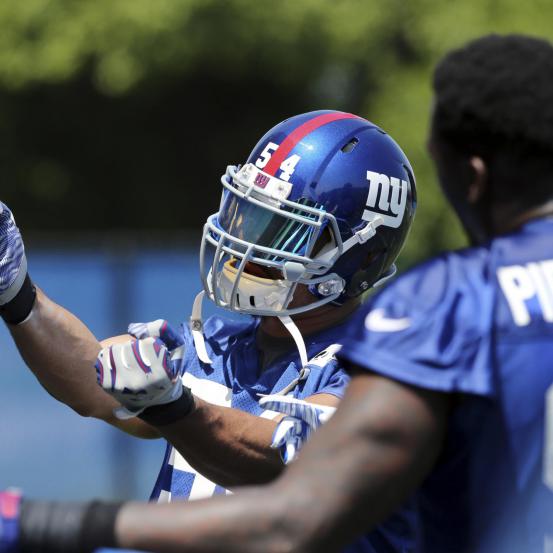- Commissioner’s statement on Ventura, Marte
- Ronnie O’Sullivan: Masters champion ‘felt so vulnerable’ in final
- Arron Fletcher Wins 2017 WSOP International Circuit Marrakech Main Event ($140,224)
- Smith challenges Warner to go big in India
- Moncada No. 1 on MLB Pipeline’s Top 10 2B Prospects list
- Braves land 2 on MLB Pipeline’s Top 10 2B Prospects list
- Kingery makes MLB Pipeline’s Top 10 2B Prospects list
- New Zealand wrap up 2-0 after Bangladesh implosion
- Mathews, Pradeep, Gunathilaka to return to Sri Lanka
- Elliott hopes for rain for Poli
Breaking Down New York Giants’ Situation at Defensive End
- Updated: May 25, 2016

After completing a thorough look at the New York Giants’ offensive positions, let’s now begin breaking down the various positions on defense starting with the defensive ends.
2015 in Review
One word, ladies and gentlemen: Blech!
That’s right, the New York Giants defense, which heavily depends on the defensive front to generate a pass rush, was so dismal in getting much of anything done, the ripple effect could be felt all the way back to the defensive secondary and beyond.
Let’s start with the run defense, which allowed 121.4 yards per game, ranked 24th in the NFL.
According to TeamRankings.com. the Giants’ run defense also allowed a whopping average of 6.5 first-downs via runs per game.
Want to talk about sacks? The Giants finished with 23 sacks, an average of just 1.4 sacks per game, placing them 30th in the league, per TeamRankings.com, just ahead of Buffalo and Atlanta in that category. That’s a sharp drop from the 47 they posted the year before and their lowest total since the turn of the century.
Of course, when evaluating the play of the defensive ends, it does need to be mentioned that Jason Pierre-Paul was being heavily counted on to provide the spark to this unit.
Unfortunately for the Giants, they put all their eggs in Pierre-Paul’s basket and all those eggs fell onto the floor when Pierre-Paul lost his index finger and part of his thumb in a July 4 fireworks accident.
Combine that with the year-long injury issues that third-rounder Owa Odighizuwa experienced and the Giants’ pass rush was dismal.
The team’s sack leader, now former defensive end Robert Ayers Jr., led the Giants with 9.5 sacks last year, tying him for 13th with Philadelphia’s Fletcher Cox.
That figure was also the first time since the 2013 season that a Giants’ team sack leader didn’t record double digits and the first time New York didn’t have a sack leader in the top 10 league wide.
If all that’s not enough to convince you the showing up front was, well, “blech” (and on Friday I’ll break down how the defensive tackles’ play contributed to the disaster that was 2015), the Giants’ sacks per pass attempt was 3.61 percent, according to NFL Game Statistics and Information Systems, while the league’s average was 6.49 percent.
Want one piece of good news regarding the defensive ends? After logging just four batted passes in 2014, that total jumped up to 10 in 2015, with Pierre-Paul leading the defensive ends in that category with six.
That meant the defensive ends were getting their hands up to knock passes down even if they were stonewalled at the point of attack.
2016 Outlook: Where Can This Unit Improve?
Obviously, the pass rush is at the top of everyone’s list—the Giants defense lives and dies by its ability to rush the passer.
And by rushing the passer, that’s not strictly limited to sacks. Rather, that pass-rushing production also needs to include hurries and hits (backfield disruptions).
Per Pro Football Focus, Pierre-Paul managed just one sack and six hits while recording a team-leading 34 hurries in just half a season.
Ayers, who played in four more games than Pierre-Paul, finished two backfield disruptions shy of his teammate.
And just to get back to the run defense, there is certainly room for improvement there as well. Per Football Outsiders, the Giants’ defensive line,ranked 22nd overall, but it had their share of problems protecting the edges.
Opponents averaged 5.37 yards when running to the left end—30th in the NFL. The right side was a little better, with the Giants allowing opponents an average …
continue reading in source www.bleacherreport.com
